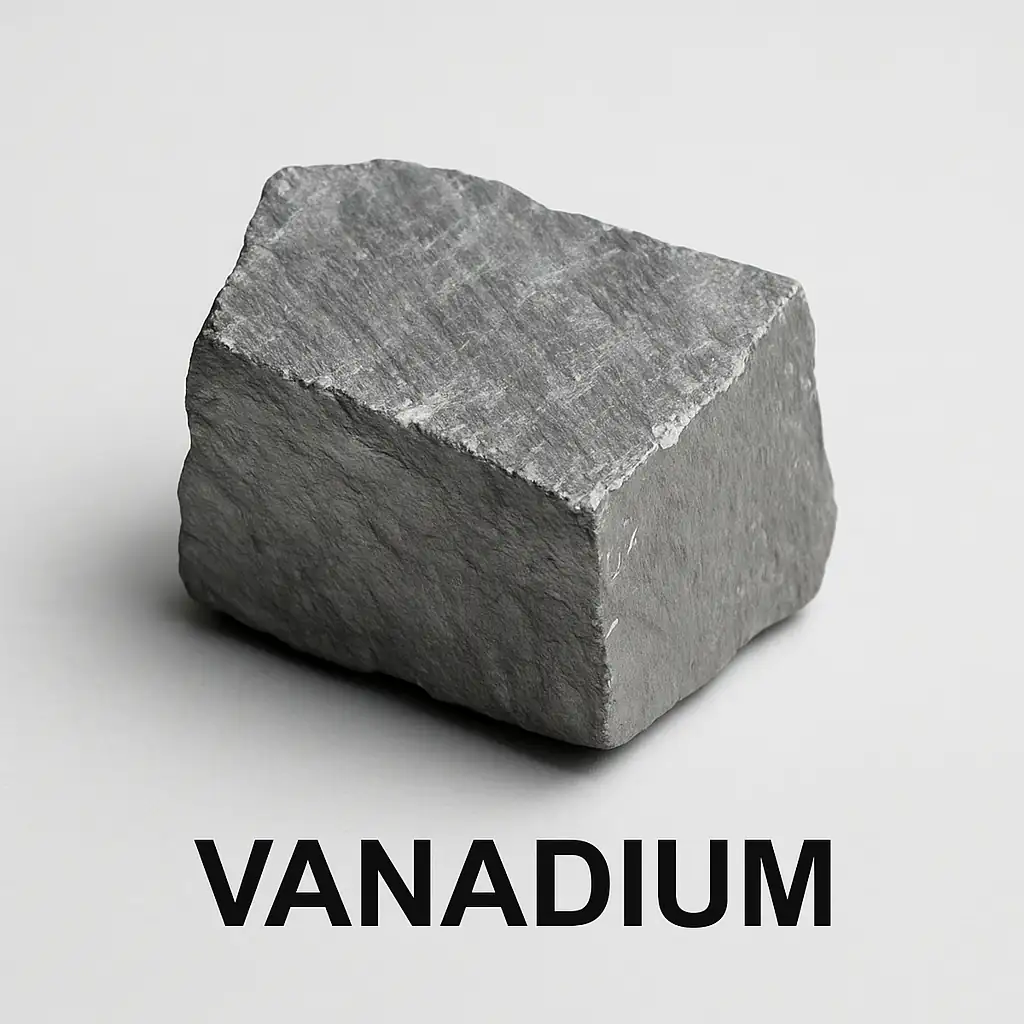Introduction
Have you explored Vanadium properties? They’re truly fascinating! Vanadium, element 23, is a versatile metal with unique traits. It was discovered in the early 19th century. Today, in May 2025, its role in science grows. Therefore, we’ll dive into Vanadium properties deeply. We’ll cover its discovery, uses, and compounds too. Curious about this element? Let’s start this journey together!
Vanadium shines in modern industries and research. Its alloys intrigue engineers worldwide. How does it impact technology? Its strength surprises many experts. Moreover, its chemical versatility stands out. Vanadium properties unlock new innovations. For example, it boosts steel durability. Also, it occurs in Earth’s crust naturally. Its compounds offer exciting possibilities. This metal shapes sustainable energy solutions. Museums showcase its history vividly. Students learn about it in chemistry classes. Its presence grows in renewable tech. New studies reveal its potential yearly. Why is it so valuable? Let’s find out together.
Beyond science, Vanadium inspires industrial progress. Documentaries highlight its role in batteries. Articles and books explore its history. Chemists use advanced tools to study it. Its applications spark interest across fields. This article will cover all these aspects fully. Let’s explore its key features next.

What Makes Vanadium Properties Stand Out?
Vanadium properties set it apart as a remarkable element. It has a silvery-grey color and shiny surface. Its atomic number is 23, with an atomic weight of 50.94. Vanadium melts at 1,910°C, showing high heat resistance. Its boiling point reaches 3,400°C. Vanadium properties include a high strength-to-weight ratio. This makes it ideal for alloys. It resists corrosion in harsh environments. Its density is 6.0 g/cm³, moderate for metals.
Vanadium properties also reveal its chemical flexibility. It forms multiple oxidation states, from +2 to +5. This versatility aids in catalysis. Moreover, it’s ductile and can be shaped easily. Its hardness enhances material durability. Vanadium has a body-centered cubic structure. This structure supports its toughness. Its electrical conductivity is moderate but useful. These traits make it valuable in industry. Surprisingly, it’s non-toxic in pure form. Its magnetic properties are weak but notable. Vanadium properties drive advanced material science. Its resistance to acids impresses chemists. Let’s look at its discovery next.

How Did Vanadium Discovery Unfold?
Vanadium discovery began in the early 1800s with curiosity. In 1801, Andrés Manuel del Río found it in Mexico. He detected it in a lead ore called vanadinite. Initially, he thought it was chromium. In 1831, Nils Gabriel Sefström confirmed it. He named it Vanadium after Vanadis, a Norse goddess. This name reflects its colorful compounds. Extracting it was tough due to impurities. Early samples needed refining techniques.
Vanadium discovery progressed with better methods. In 1867, Henry Roscoe produced pure Vanadium. He used hydrogen reduction to isolate it. This breakthrough aided industrial use. Fossils and rocks revealed its presence globally. For example, it’s found in magnetite deposits. Modern tech, like X-ray analysis, refines its study. New sites in South Africa yield rich ores. These findings expand our knowledge yearly. Thus, Vanadium discovery shaped metallurgy. Let’s explore its applications now.

What Are the Key Vanadium Uses?
Vanadium uses highlight its industrial importance. It strengthens steel for construction and tools. About 85% of Vanadium goes into steel alloys. These alloys resist wear and fatigue. Vanadium enhances car engines and pipelines. Its presence improves aviation materials too. Batteries, especially vanadium redox flow, gain popularity. This tech supports renewable energy storage. Vanadium uses extend to ceramics and pigments.
Vanadium uses also support green technology. It reduces carbon emissions in steelmaking. Its batteries store energy for solar panels. Moreover, it aids in aerospace engineering. High-strength Vanadium alloys lighten aircraft. Its role in medical implants grows steadily. However, mining it poses environmental challenges. Recycling efforts aim to ease this impact. Thus, Vanadium uses drive modern innovation. Its demand rises with clean energy trends. Let’s examine its compounds next.

What Defines Vanadium Compounds?
Vanadium compounds showcase its chemical diversity. Vanadium pentoxide (V₂O₅) is its common oxide. This compound acts as a catalyst in industries. It helps produce sulfuric acid efficiently. Vanadium compounds include vanadates, like sodium metavanadate. These are used in dyes and glassmaking. Vanadium forms complexes with organic molecules. Its +5 state is stable in these compounds.
Vanadium compounds also play in biology. Trace amounts support enzyme functions. However, excess can be toxic to humans. Its colorful ions, like VO²⁺, intrigue chemists. These ions shift from yellow to blue. Moreover, Vanadium compounds aid battery tech. They enhance energy storage capacity. Their stability under heat is impressive. Thus, Vanadium compounds fuel scientific research. Their applications grow in nanotechnology. Let’s conclude this exploration.

Leave a Reply